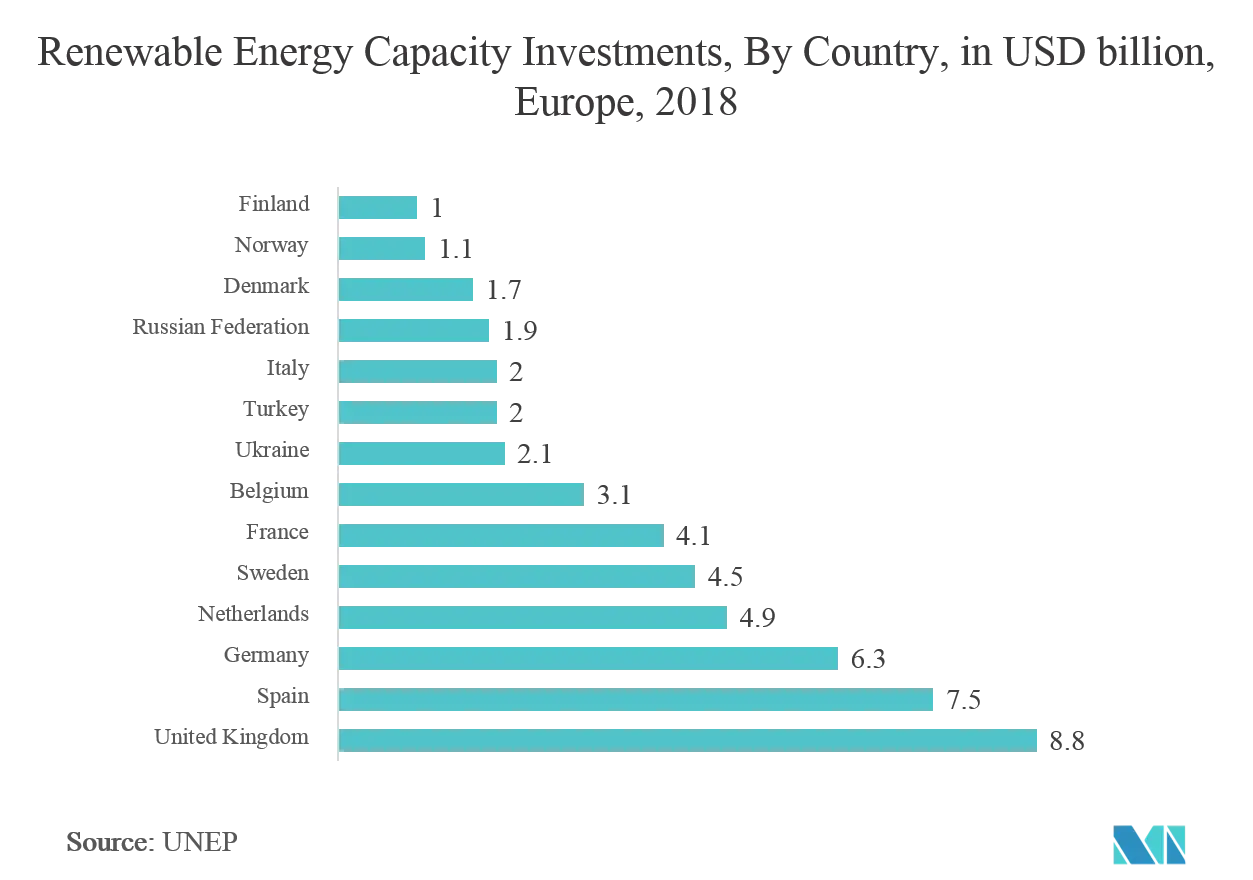Market Trends of Europe Shunt Reactors Industry
This section covers the major market trends shaping the Europe Shunt Reactors Market according to our research experts:
Electric Utilities Expected to Gain Maximum Adoption
- The investments in upgrading Transmission and Distribution infrastructure in Europe are on the rise; for instance, Italian transmission system operator Terna has procured a EUR 490 million as a loan from European Investment Bank (EIB) to modernize its electricity transmission grid in Italy.
- Also, according to the estimation of the members of the Federation of Associations of Energy Utility Companies (ACUE), the Romanian electricity and gas distribution networks need an investment of over EUR 10 billion in the long-term to replace the outdated infrastructure in order meet EU standards for power transmission and distribution.
- The European Project of Common Interest (PCI) aims at optimizing the efficiency of the Croatian and Slovenian electricity transmission grids through the application of advanced technologies. In December 2019, the ELES substation in Divača had been equipped with a variable shunt reactor, in collaboration with Siemens. As per the contract, Siemens supplied and installed a variable shunt reactor (VSR) 0f 150 Mvar.
- The rising demand for power will drive the demand for products, solutions, and services allied to the energy sector in the region. Shunt reactor demand for the energy and utility will grow significantly in the coming years in-mid of growing electricity demand and connectivity projects undertaken by the governments.
- For instance, the Ministry of Energy of the Republic of Lithuania has undertaken a project for synchronization of the electricity network with the grid of Western Europe. This project will reduce electric power transmission capacities with Belarus and will prevent the flow of electricity from the unsafe Astravets Nuclear Power Plant (NPP) in the future. In implementing the North-East Lithuanian reconstruction project, two 330 kV transformer substations in Ignalina and Utena will be reconstructed, and a 330 kV-controlled shunt reactor will be moved from the Ignalina substation to the 330 kV switchyard in Elektrėnai.

United Kingdom Expected to Dominate the Market
- The United Kingdom is one of the primary industrial countries in Europe, which is home to various manufacturing industries whose energy needs are increasing rapidly. According to the UK Department for Business, the final energy consumption of industry in the United Kingdom by 2035 in electricity is expected to reach 5,928 thousand metric tons of oil equivalent, whereas renewables are expected to reach 1,223 thousand metric tons of oil equivalent.
- Moreover, the country is observing significant investments in the expansion and upgradation of its existing transmission and distribution network. For instance, Britain's energy market regulator Office of Gas and Electricity Markets (Ofgem) has given permission to National Grid to build a power grid upgrade to connect the new Hinkley Point C nuclear power station in Somerset.
- Besides, the country is increasingly investing in a smart grid. The UK government recently pushed the deadline for its EUR 13 billion smart energy metering rollout by four years to 2024. As of December 2019, there were 16.5 million smart and advanced meters operating in homes and businesses across Britain.
- Owing to such growing renewable energy investments in the region, the shunt reactor vendors are also focusing their offerings to the industry requirements. Siemens in the United Kingdom has built one of the largest variable shunt reactors featuring a rating of 120-300 MVAr and a rated voltage of 220 kV, weighing 317 metric tons and measuring approximately 10x8.5x8 meters.


